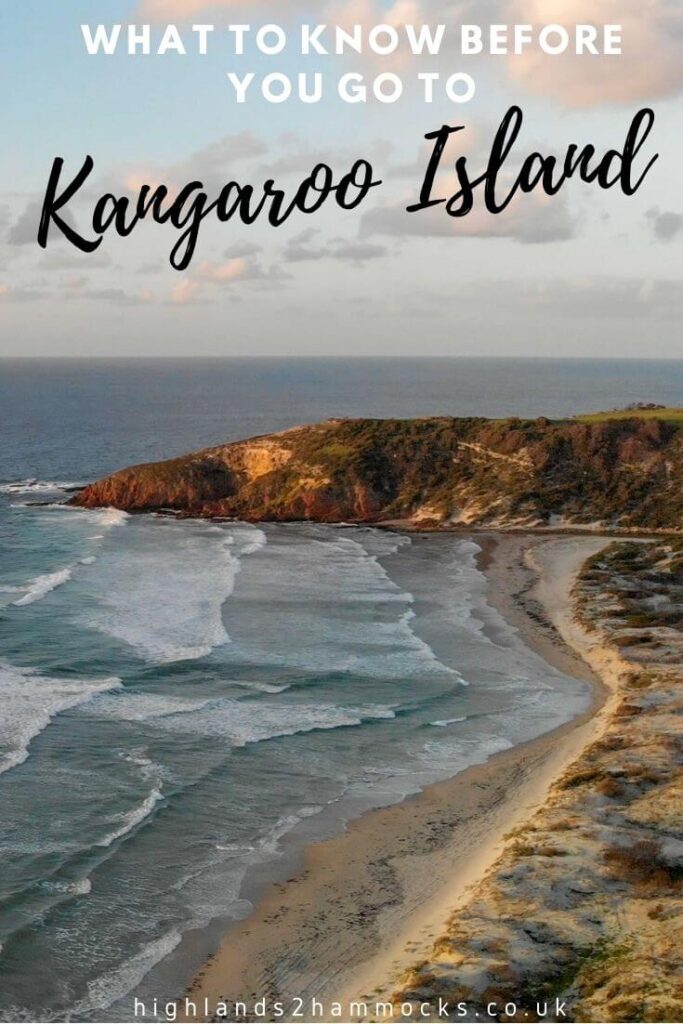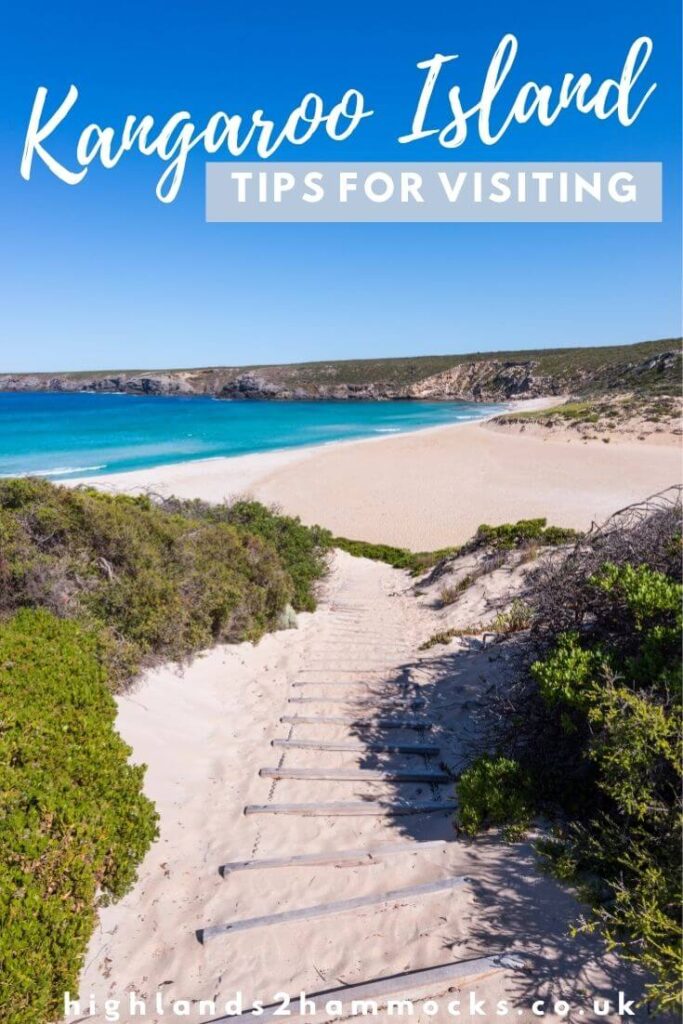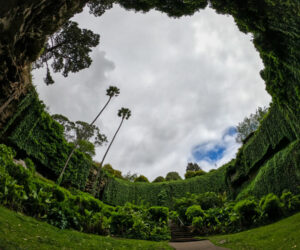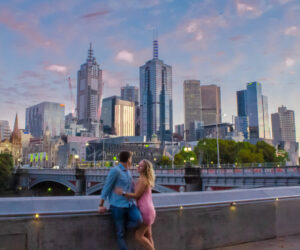Flinders Chase National Park is a protected area located on the west of Kangaroo Island. Despite most of the park being destroyed by bushfires in recent years, it continues to feature iconic landmarks that are recognised worldwide and well worth a visit. In the park you will also be able to look out for the magnificent Australian wildlife whilst visiting the park.
No time to read now? No problem! Save an image to your Pinterest board for later.


A Complete Guide to Flinders Chase National Park Kangaroo Island
In this guide, all of the below points will be discussed in greater detail. We will also go into how to get to Talia Caves where you should stay nearby and what the other nearby sights and attractions are.
- About Flinders Chase National Park
- How to Get to Flinders Chase National Park
- Things to do in Flinders Chase National Park
- Where to camp at Flinders Chase National Park
- Wildlife in Flinders Chase National Park
About Flinders Chase National Park
Flinders Chase National Park has now reopened for self-drive visitors to share in the bushfire recovery journey. More than 200,000 hectares of the 440,500-hectare island was burnt, nearly half of the island! 96% of Flinders Chase National Park was unfortunately burnt during these devastating bushfires.
Recovery from the bushfire is still underway in the park as the visitor centre and facilities as well as the walkways and boardwalks were all destroyed. Fortunately, there are many of the tourist sights listed below that are still intact and accessible for visiting.
There is ongoing work to continue to support the native animal recovery from the bushfires and there have been sightings which is good news.
Plant life is also bouncing back so it hopefully shouldn’t be long before the bush is back.
The park is currently open between 9am-5pm daily, with the last admission being at 3pm. You should ensure you allow 25 minutes to drive from the Admirals Arch area to the exit.
Due to the visitor centre being destroyed, there are no longer eating and drinking facilities in the park, the nearest place being Vivonne Bay General Store.
There are also limited toilets in the park.
You may have seen the famous Cape du Couedic Road on Instagram. This is located in Flinders Chase National Park.
Unfortunately, pets, including dogs, are not permitted in the park.
The cost of Flinders Chase National Park is $11 adult and $6 child. This can be booked and paid for online.
If you are planning ahead, we would recommend booking your entry ticket for Flinders Chase National Park in advance. You may be able to get signal when you first enter the park however this isn’t always guaranteed.

How to get to Flinders Chase National Park
Flinders Chase is located on the western side of Kangaroo Island 128km from Penneshaw, where you will arrive on the ferry. You will follow S Coast road which is a sealed main road, therefore this journey will take around 1.5 hours.
Things to do in Flinders Chase National Park
Admirals Arch
On the walk down to Admirals Arch, lookout for the seals playing in the rock pools below. There are loads of them out sunbathing and in swimming as well, it’s fascinating to watch them in their natural habitat. This spot is also home to the Great White Shark, who regularly hunt the resident seals, so make sure you keep an eye out for the fin floating across the surface.
The arch itself is at the end of the boardwalk and was formed by weathering and erosion over time. This is a beautiful photo spot so don’t forget your camera!
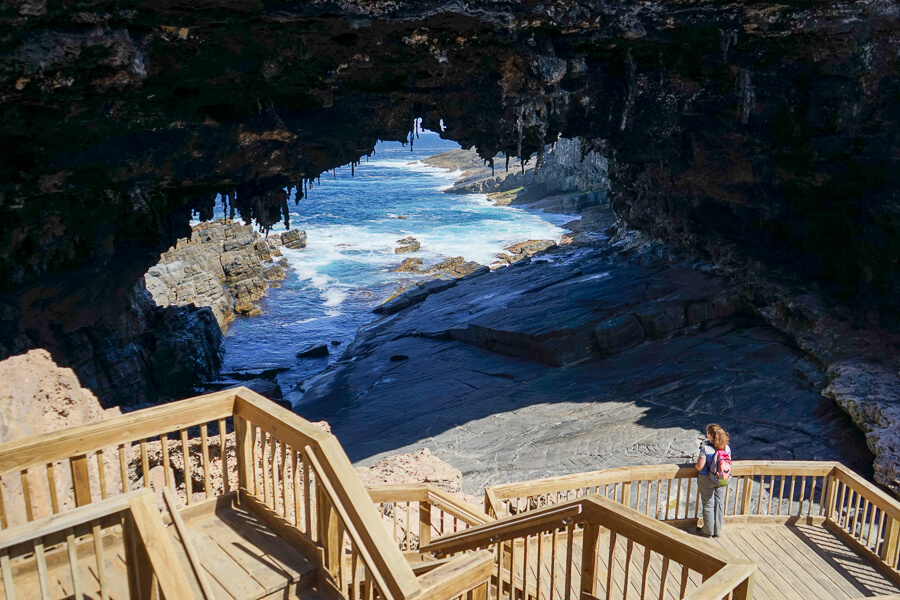
Cape du Couedic Lighthouse
On your return from Admirals Arch, you may want to stop off and have a look at Cape du Couedic Lighthouse. For many of the early years of this lighthouse, it was inaccessible by land and a flying fox was built to bring up materials and equipment.
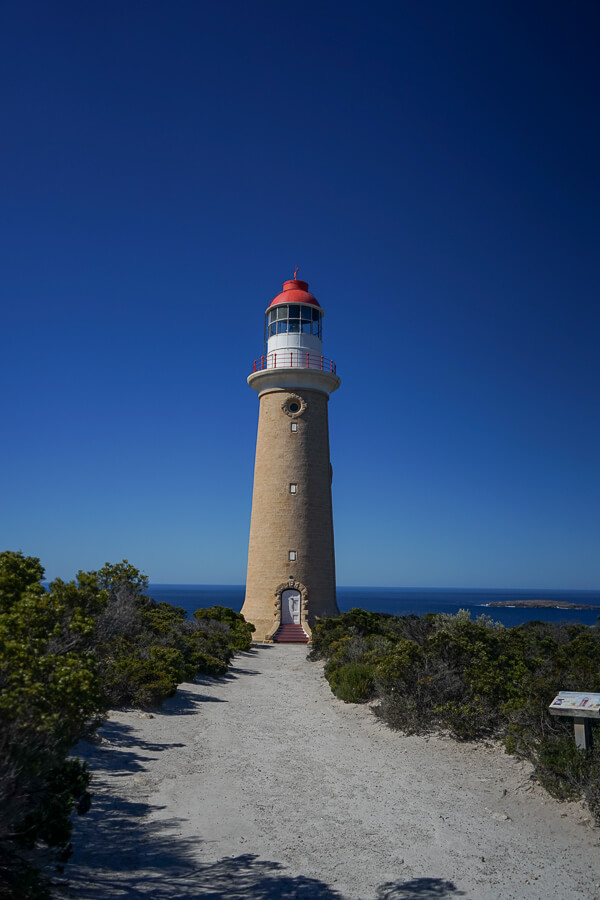
Weirs Cove
Also located in Flinders Chase, a short drive, or walk, whichever you prefer, will take you round to Weirs Cove. Here you can look down to the beautiful beach below and if you are lucky you might spot some more seals. You will see the remains of the house where the workers lived many years ago. Here you will also find the remains of a “flying fox” cable system that was used for transporting goods, equipment and even people up the 90m high cliff face.
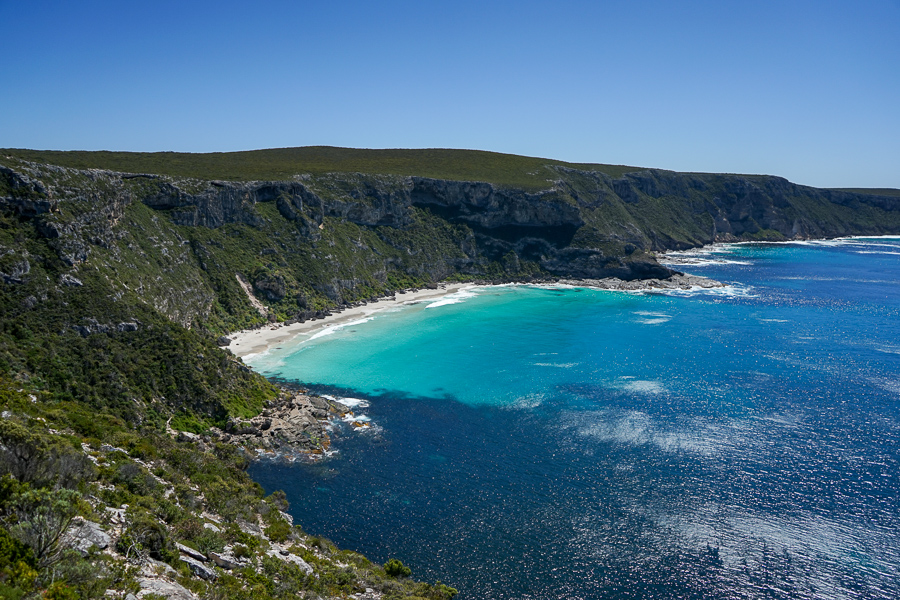
Remarkable Rocks
The Remarkable Rocks, formed by erosion and weathering, are an incredible piece of history to see during your Kangaroo Island itinerary. Perched above the sea, these granite boulders vary in shapes and sizes and are available to view from the viewing platform, or you can walk through them. There is a steep cliff edge surrounding the rocks, please respect the signs in place and don’t cross them.
Formed over millions of years, the Remarkable Rocks are a result of a huge slab granite floating up from the much denser magma beneath the Earth’s crust. This piece of granite began to protrude through the softer, sandy ground of Kangaroo Island, exposing the tip of it to weathering erosion.
Over time, the cracks and fissures formed by heating and cooling beneath the surface of the Earth begin to wear away at different rates. This results in the uneven and peculiar shapes of rocks that you see on the site today. In another million or so years these rocks will possibly be completely worn away, or even replaced with other remarkably shaped rocks!
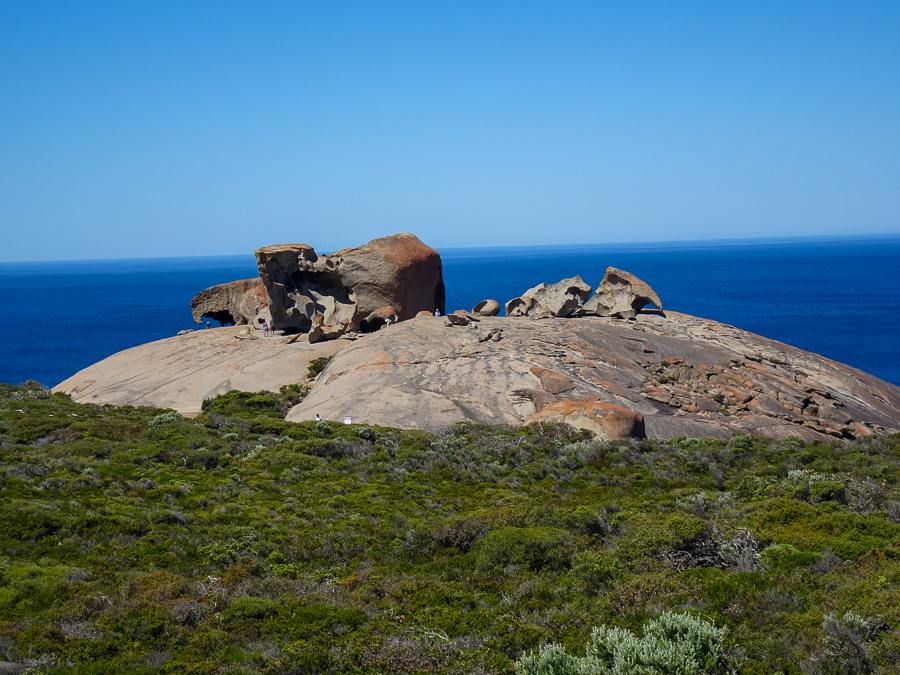
Platypus Waterhole Walk
*Unfortunately this walk has not yet reopened after the devastating bushfires that swept through Flinders Chase National Park in 2019/2020*
As if we haven’t seen enough nature here on Kangaroo Island, it’s time to go on the lookout for more. Head back to the visitor centre along the photogenic winding road and have some lunch. Many koalas chill out in the trees in the car park here so make sure to keep looking up.
Once you are fueled up and ready to go, there is a selection of walks to choose from that leave from the visitor centre, however, we recommend the Platypus Waterhole Walk, which is around a total of 3.5km. There are over 200 platypi living in the waterholes in Flinders Chase Conservation Park, so with a lot of patience and silence (and I mean a LOT), you might be lucky to see one.
We sat around for a couple of hours, staring at the water and watching the bubble and ripple underneath, however, unfortunately, they were too shy to show their faces. Maybe next time.
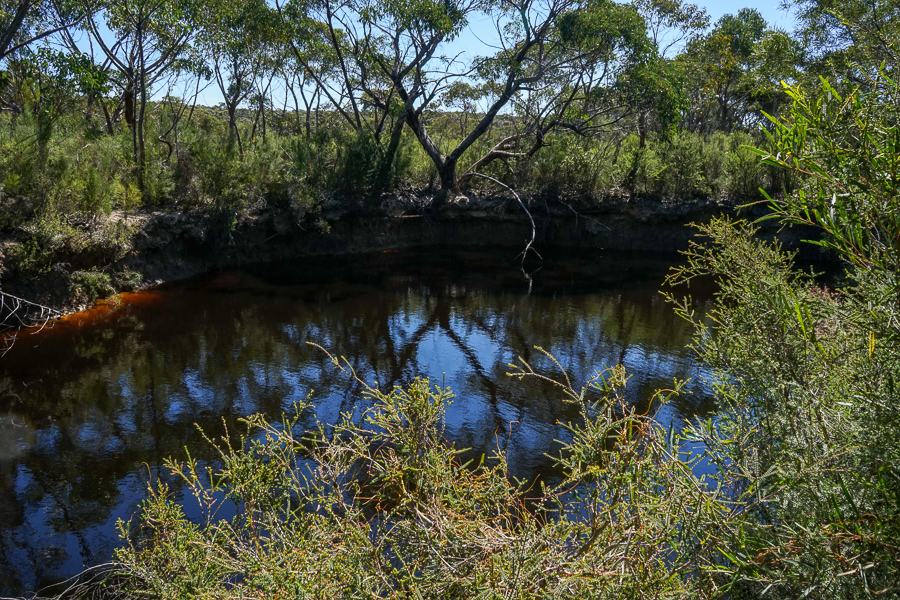
Where to camp at Flinders Chase National Park
Unfortunately the 2019/2020 bushfires destroyed the infrastructure and facilities at the park so at the moment there are no overnight stays allowed in Flinders Chase National Park.
Wildlife at Flinders Chase National Park
The bushfires destroyed a lot of the wildlife in Flinders Chase National Park, however there have been sightings of koalas, kangaroos, echidnas and eagles.
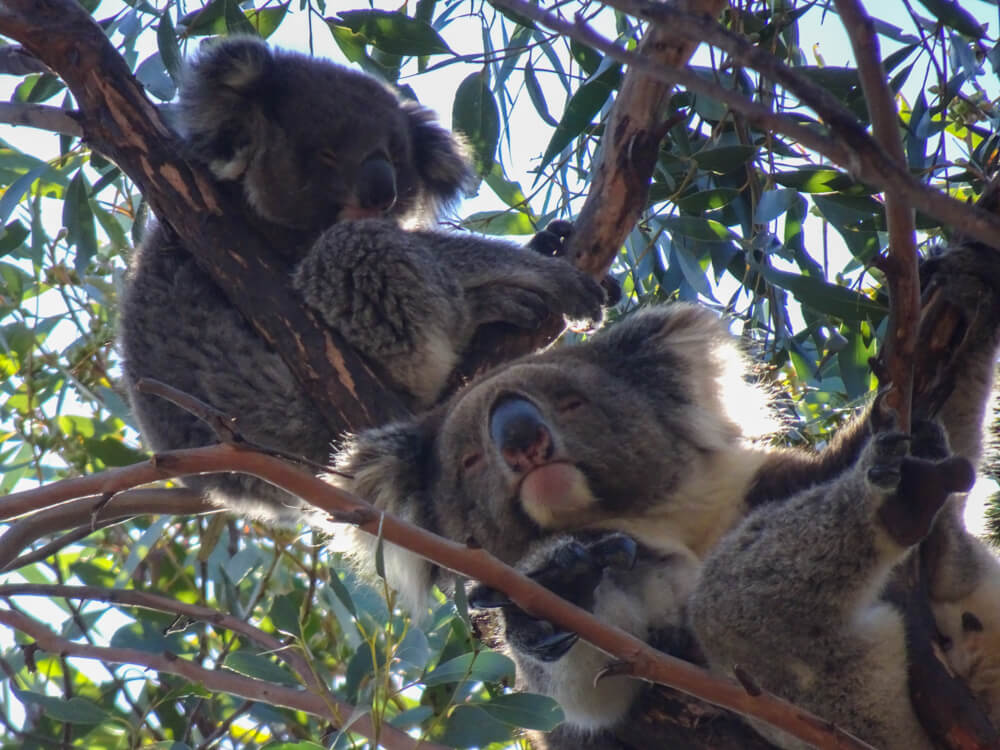
Before You Leave for Kangaroo Island
Before you set off on your adventure of a lifetime to Kangaroo Island, there are several things you will need to get organised to ensure a smooth and enjoyable trip. These include sorting out travel insurance, transport to and around the island, packing for your trip and finding the best place to stay. All of these will be discussed below in more detail.
Applying for an Australian Visa
If you have yet to leave for Australia then this is a section of interest for you. There are a LOT of different visa options for people arriving into Australia, from tourist visas to permanent residence visas. The most common visas, however, are the 3-month tourist visa and the Working Holiday Visa.
If you are only visiting Australia for a short period of time then a tourist visa is your best option. These are easily obtained and relatively cheap, costing roughly $140AUD, and allow you to stay in the country for up to 12months. These can be applied for on the government website here.
If you wish to work and travel in Australia, a working holiday visa is your best option. These cost around $480AUD and allow you to stay in Australia for up to 12months, whilst working and earning money to travel. This visa also gives you the opportunity to extend your stay in Australia by up to 24months by working in certain job sectors.
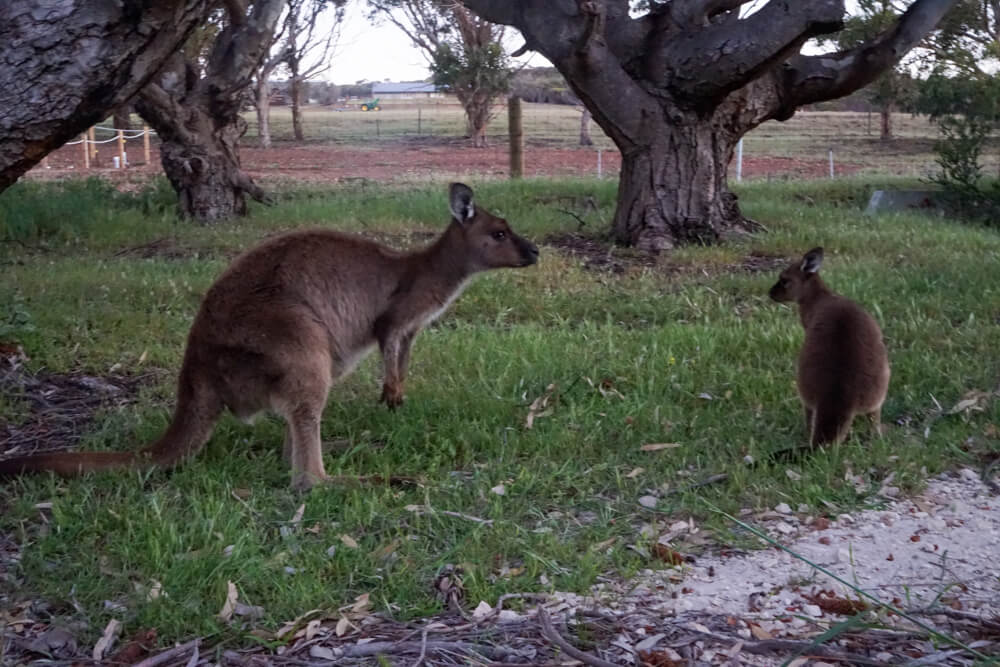
What to Pack for Kangaroo Island
Being an island, Kangaroo Island will be at risk of experiencing some mixed weather. Depending on the season your visiting will depend on what you pack. At the least, we would always recommend a warm layer, a waterproof and, of course, suncream!
During the summer months, Kangaroo Island can reach temperatures in the 30’s, meaning it should be warm enough to get in the water for a swim. This also means that you will need plenty of lightweight clothing for getting around and exploring in the heat of the midday sun.
In the winter months, you would need to be very brave to get in the water as the temperatures average at half that of summer, peaking at around 14 degrees Celcius. Warm layers and a waterproof is a must for these months!
If you need more inspiration on what to pack for your trip, check out our full packing guides for all-weather conditions over here.
When it comes to toiletries, we recommend that you pack as much sunscreen as you can. The sun in Australia is strong, and even the darkest skin tones can get easily burnt. No matter what the season is or how warm you may feel, you should always wear sunscreen in Australia.
Given the beautiful sights and scenery that you are no doubt going to see around Kangaroo Island, we highly recommend packing a good camera for your trip. If you want to read more about the cameras we use and why we love them, check out the link below.
You can read what else we keep in our camera bag over here.
Photography Equipment
Main Photography Camera – Sony A7iii Mirrorless Camera
Main Lens – Sony FE 16-35 mm f/2.8 GM
Zoom Lens – Tamron 70-180mm f/2.8
Camera Stand – Neewer Portable 177cm
Vlogging Camera – Sony HX90v
Action Camera – GoPro Hero 8 Black
Drone Camera – DJI Mavic Pro 2
Camera Bag – Lowepro Flipside 300 AW
What is the Best Travel Insurance for Kangaroo Island
Regardless of what type of trip you are heading on, one thing that is essential for everybody is good travel insurance. Accidents can happen anywhere and at anytime and unexpected hospital bills will ruin a holiday. Remove the stress from your next adventure and get covered for the worst.
World Nomads Travel Insurance provides budget reliable travel insurance that will keep you covered for any level of adventure.
You can get your quote before you leave on your trip right here.
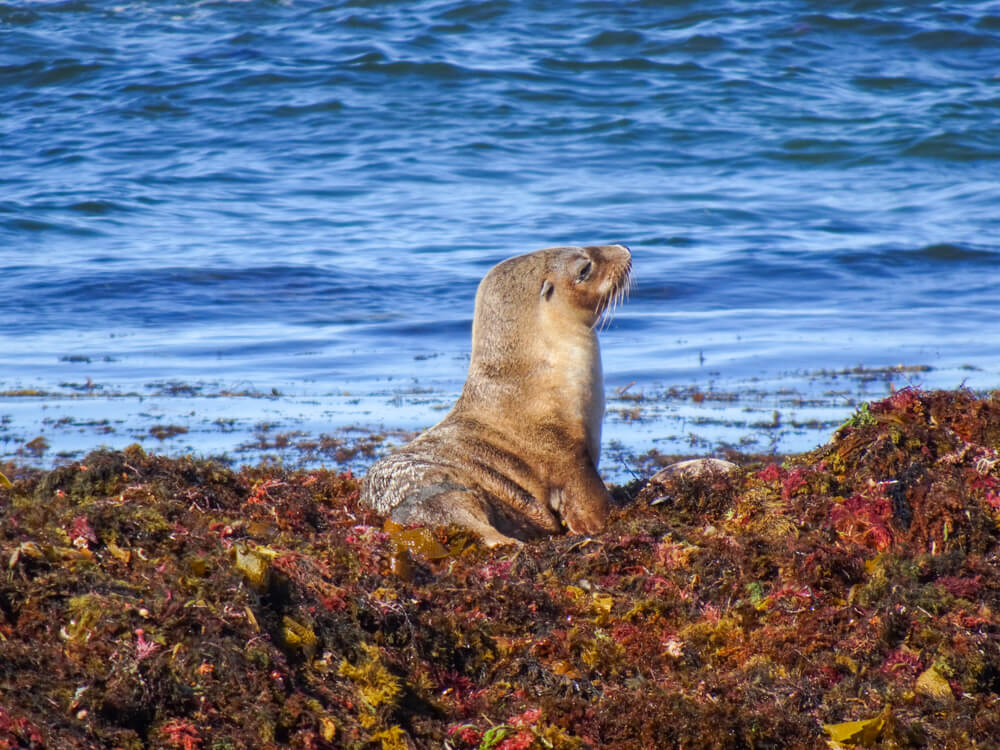
How to get to Kangaroo Island
Unfortunately, getting to Kangaroo Island is the reason that it is not as popular as many other areas in Australia. There are only two options for getting to the island (and only one if you wish to bring your own vehicle).
With a larger vehicle and passenger ferry and a smaller passenger-only ferry operating to the island, the prices of transport are very monopolised, resulting in the most expensive ferry (per metre of travel) in the world.
Sealink Ferry
Sea Link offers passenger and vehicle crossings from the tip of the Fleurieu Peninsula on mainland Australia to Penneshaw on the island. This is an expensive option, however, by bringing your own vehicle it means when you arrive onto the island you can get straight into exploring.
This ferry leaves 5 times a day and takes 45 minutes to get across.
Browse the best option for getting to KI on this ferry right here.
Did you know – The Kangaroo Island ferry is the most expensive ferry in the world per distance!
Kangaroo Island Direct Ferry
This ferry leaves for KI 4 times a week, so it is much less regular than the SeaLink option. It is also only a passenger ferry, meaning you will not be able to bring your own transport with you. This ferry is a much cheaper option if you are wanting to go across as a passenger only, however, once you are on the island you will need to pay a lot more money for transport.
You can browse the ferry tickets and transport options available from KIC right here.
Airplane
Flying to Kangaroo Island is another option, however, this can be an expensive option and you would be restricted on your luggage. Flights from Adelaide tend to go for roughly $150 each way. You will also need to organise a method of transport for getting around the island when you arrive.
Browse your options for flying to Kangaroo Island right here.
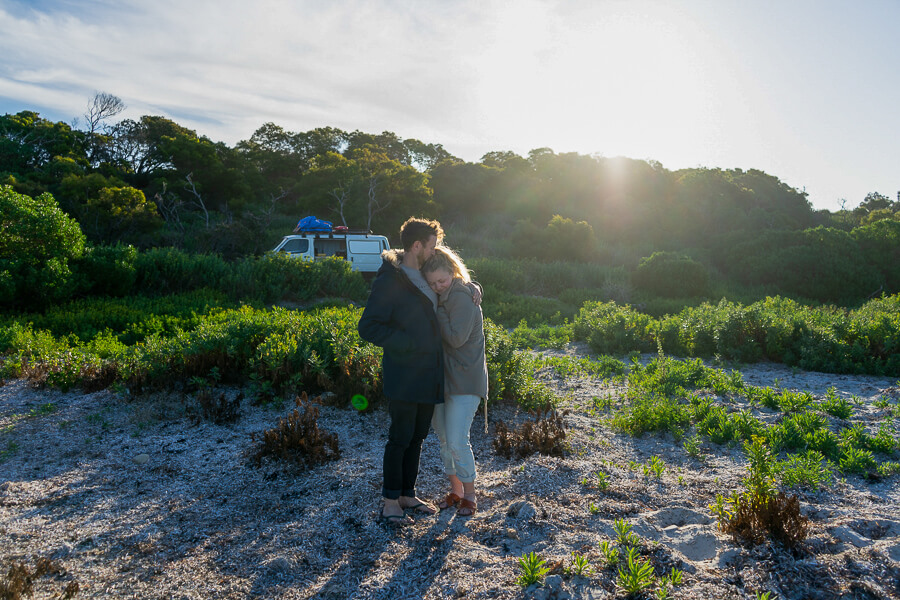
How to Get Around Kangaroo Island
When it comes to getting around the island you have a few different options available. If you did not bring your own transport, you can rent a car or campervan and travel the island yourself at your own pace. This is the best option if you are not short on time, as it means you can dictate the pace of your adventure.
Private Tours
As for getting around the island, a 4wd is advisable, however not necessary. Many of the beautiful beaches are off the beaten track and can be up to 20km of gravel roads. The same goes for a lot of campsites in the more isolated areas, so beware if you are using a hired campervan or bringing your own.
There are car hire services available when you arrive at Penneshaw or you can book this as a package with your ferry. We would recommend hiring a campervan during your trip on Kangaroo Island due to the flexibility it gives you. You can park up wherever you are and cook your next meal, not wasting any time travelling back and forward.
Organised Tours
The last option for getting around Kangaroo Island is to book yourself onto a Kangaroo Island tour and enjoy a more relaxed and controlled adventure around the island. This can either be with a private car driver or an organised group tour.
The organised group tours will take you to the most popular sights on the island and will show you all of the best things you can see in a short period of time. The advantage of these kinds of tours is the efficiency of getting around and the information provided about the island. Your tour guide will be able to tell you a lot of interesting things about the sights that you are visiting that you would not learn on your own.
The downside of tours is the lack of flexibility in your schedule. You will be herded from one location to the next, on as quick a schedule as possible to ensure that you see the maximum number of sights as quickly as you can.
Private tours are available for booking online or in visitor centres around the island. These tours will give you the same benefits as a group tour with less of the stringent timeline as if you want to spend more time somewhere you have that option. There are lots of different tours available, however, we have listed a few below.
Where to stay on Kangaroo Island
If camping is not your thing, there are many other accommodation options on the island as discussed below.
Luxury – Kangaroo Island Wilderness Retreat lies right on the entrance to Flinders Chase National Park. This environmentally friendly accommodation offers free wifi in an area that has limited mobile service in a beautiful natural setting.
You can book your stay at Kangaroo Island Wilderness Retreat here.
Mid-Range – Mercure Kangaroo Island is situated in the American River region on the island and offers free wifi, a pool and some amazing views over the calm sea.
You can book your stay at Mercure Kangaroo Island here.
Budget – Flinders Chase Farm is located at the west end of the island and offers great accommodation nearby to the island’s most popular attractions.
You can book your stay at Flinders Chase Farm here.
Check out our guide to Kangaroo Island Camping for available campgrounds and caravan parks.

So there you have it, the must know tips for visiting Kangaroo Island. If you are visiting this breathtaking island and have any other questions on what to expect, leave us a comment down below. We love to chat about this stuff! If you have already been, let us know how it was! What wildlife did you see on your trip? What was your favourite thing about Kangaroo Island? Let us know in the comments below!
Also, remember to share this with your friends and family that you are going to tour with. Sharing is caring and we want to inspire as many people as we can to visit this unbelievable part of the world.
If you are planning an Australia trip soon then check out our other Australia content right here. Come and find us on social media to see where we are currently exploring. Tag us in your photos from Kangaroo Island and we will share them with the rest of our community of explorers and backpackers.
Now Read:
- Kangaroo Island Self drive 5 day itinerary
- Red Banks Viewpoint – Kangaroo Island’s Secret Sunset Spot
- Kangaroo Island Camping – The Best Places to Camp on Kangaroo Island
This article may contain affiliate links that provide us with a small income. For more information read our Affiliate page.
Save an image to your Australia Pinterest board for later!
